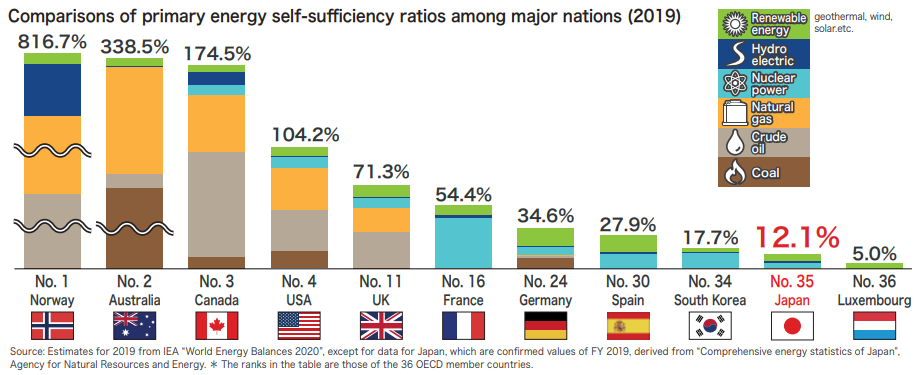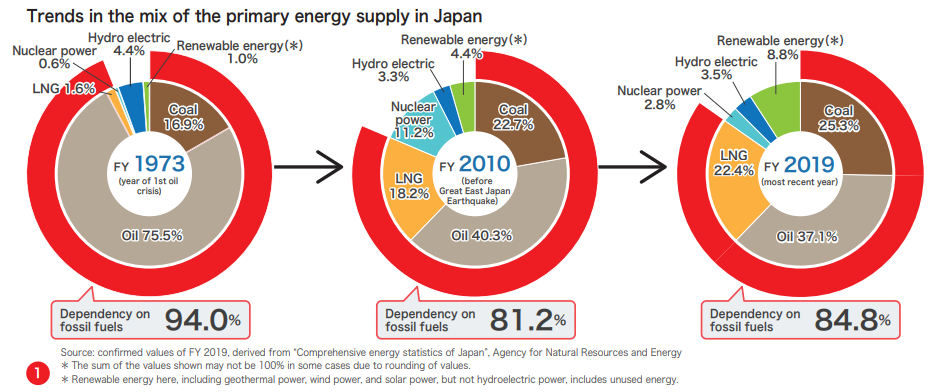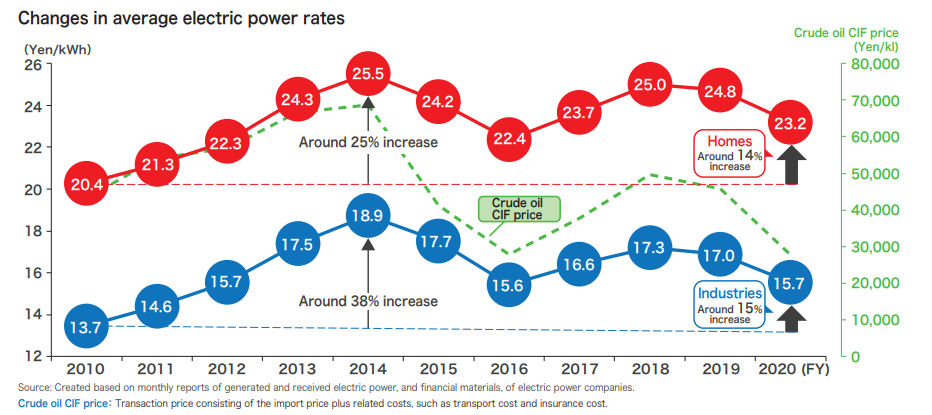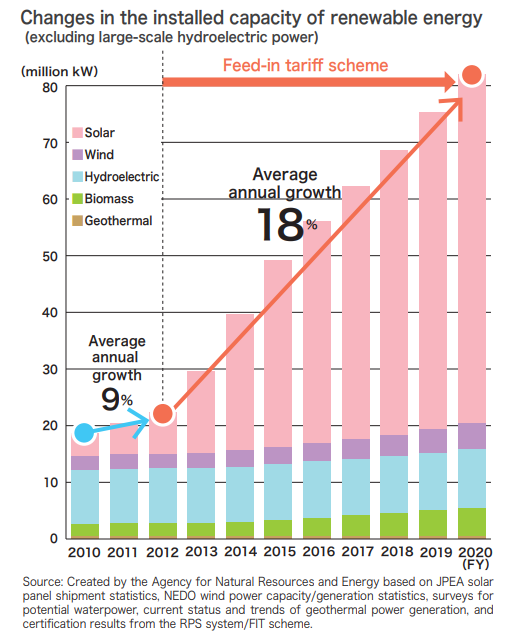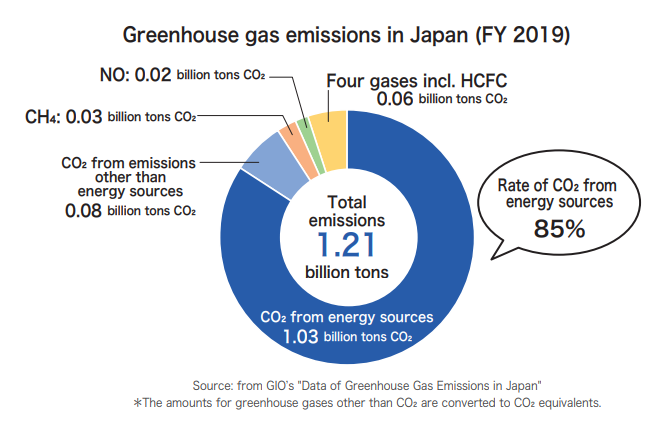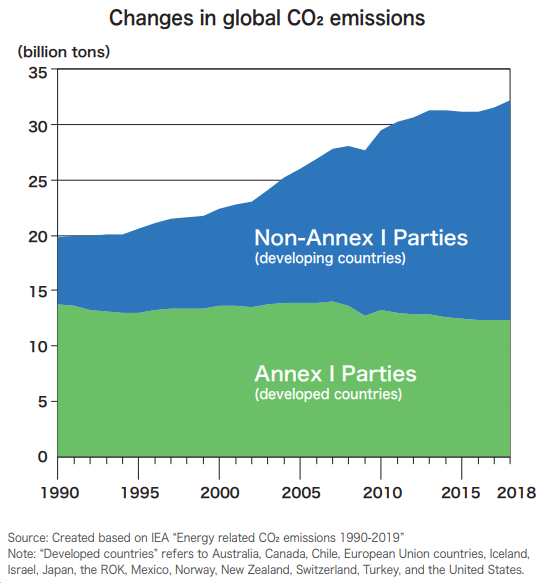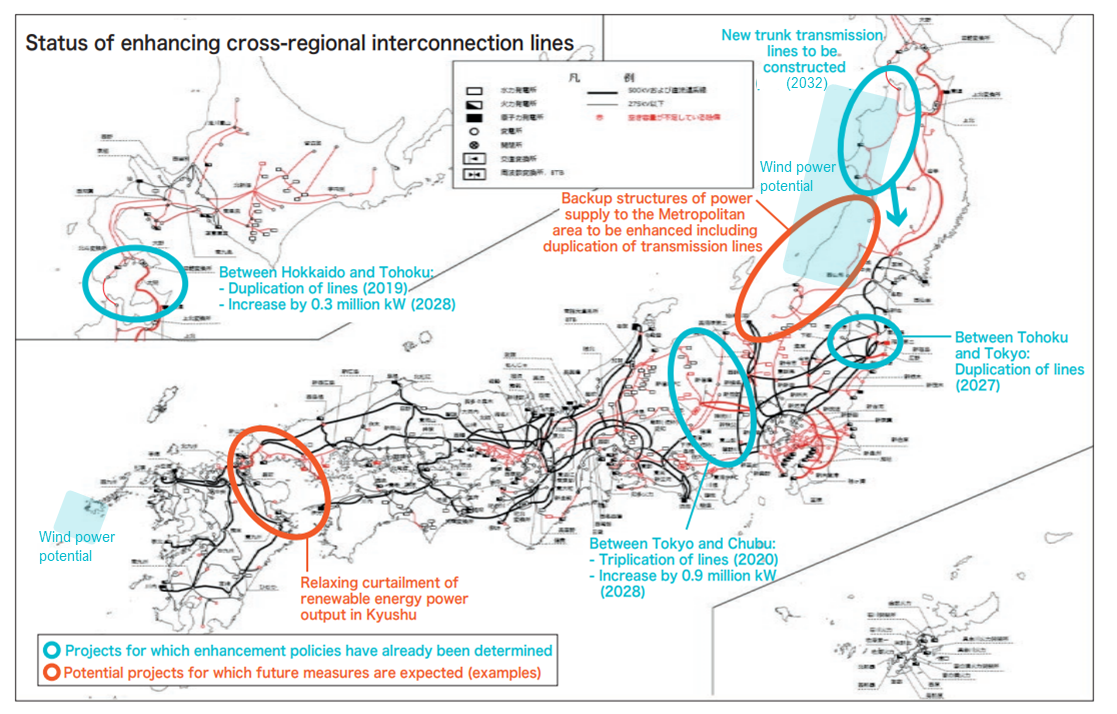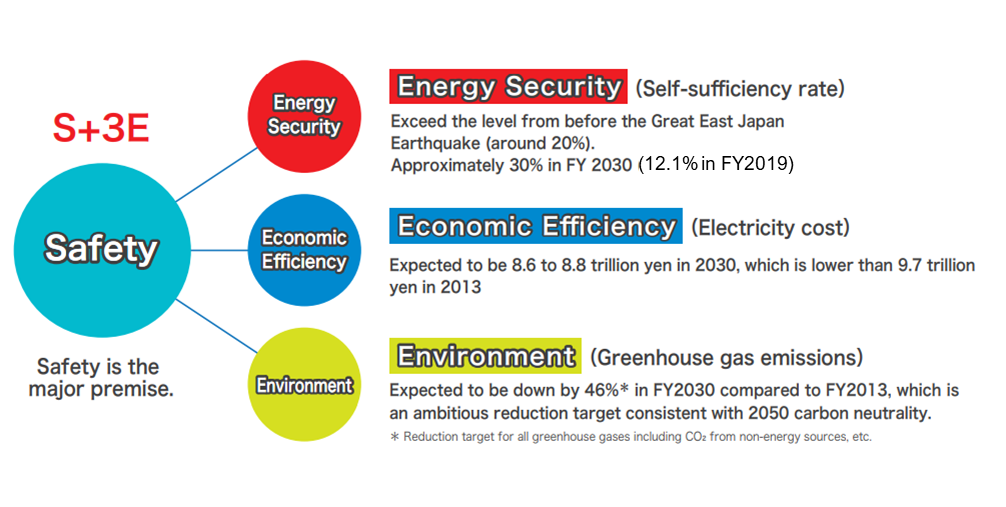2021 – Understanding the current energy situation in Japan (Part 1)
(in provisional translation)
(English ver.) 2022-10-26
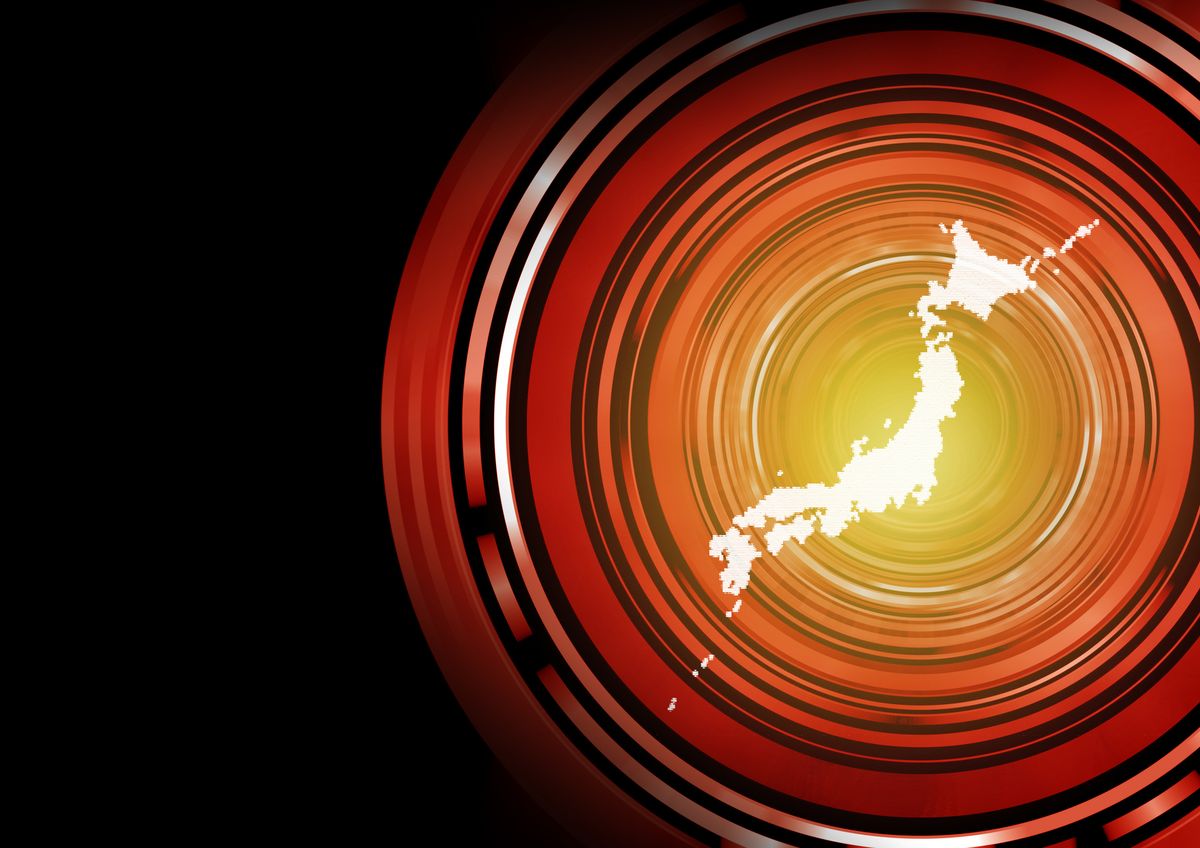
Topics of this article:
Self-sufficiency ratio versus stable supply of energy
Energy is essential for our daily living and social activities. However, Japan is a country with a low energy self-sufficiency ratio, with a percentage of 12.1% in FY2019, a considerably low level compared with other OECD countries. It was 20.2% in FY2010 before the Great East Japan Earthquake. Thereafter, it decreased substantially due in large part to the shutdowns of nuclear power plants, but started to increase gradually in recent years.
The major reason for this low self-sufficiency ratio is that energy resources are scarce in Japan. Japan depends largely on fossil fuels such as oil, coal and liquefied natural gas (LNG), most of which are imported from overseas. Having experienced oil crises in the 1970s, Japan reduced its dependency on fossil fuels to a certain extent. However, since the Great East Japan Earthquake in 2011, thermal power generation has increased with dependency on fossil fuels in FY2019 being 84.8%.
Various problems are envisaged in depending on imports from overseas. The most critical challenge will be the potential inability to secure a stable supply of energy, which is vulnerable to the impact of changing international situations. The attack on a ship of Japanese registry in the Strait of Hormuz in June 2019 is still fresh in our memories.
Japan depends on the Middle East for about 90% of its crude oil requirements. It also largely relies on imports of LNG and coal from Asia and Oceania. If anything happens in these regions, a stable supply of energy for Japan will be jeopardized. In order to secure a stable supply in such an emergency, Japan holds oil stocks equivalent to approximately 230 days of its domestic demand and diversifies the regions it imports from.
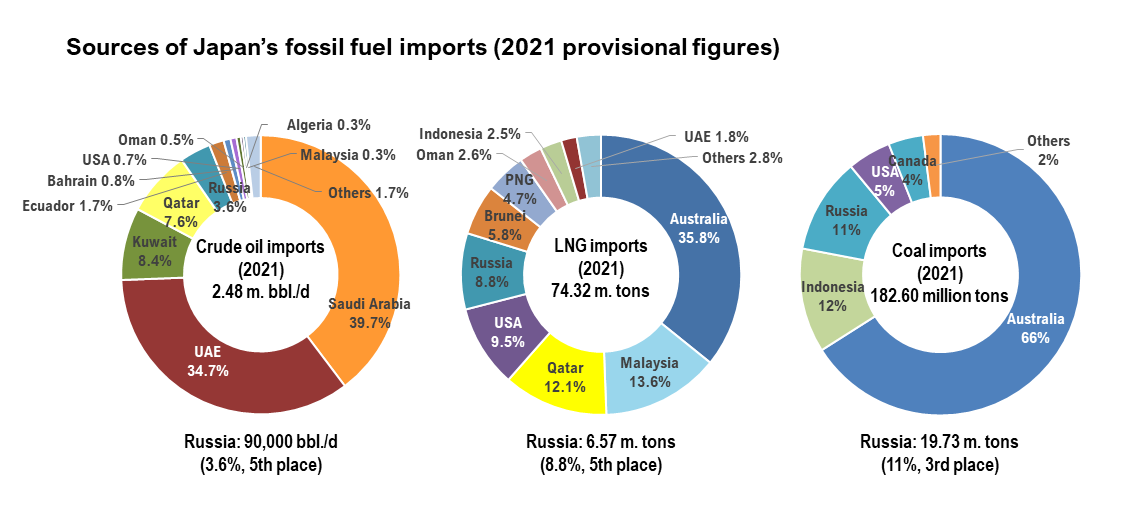
(Source) The Trade Statistics of Japan published by the Ministry of Finance
In recent years, attention is focusing on energy from natural sources such as renewable energy. However, solar and wind power are influenced by natural conditions, making it difficult to obtain a stable supply. In order to utilize these energy sources, technology for storage batteries is essential. And building storage batteries needs rare metals. For instance, in lithium-ion batteries, which are used for electrified vehicles, rare metals such as lithium, cobalt and nickel are used. Japan depends almost 100% on imports for such mineral resources. There will be increasing demand for power generation facilities using renewables and electrified vehicles. Therefore, it is necessary to secure a stable supply of mineral resources such as rare metals which are expected to play a more important role in the future.
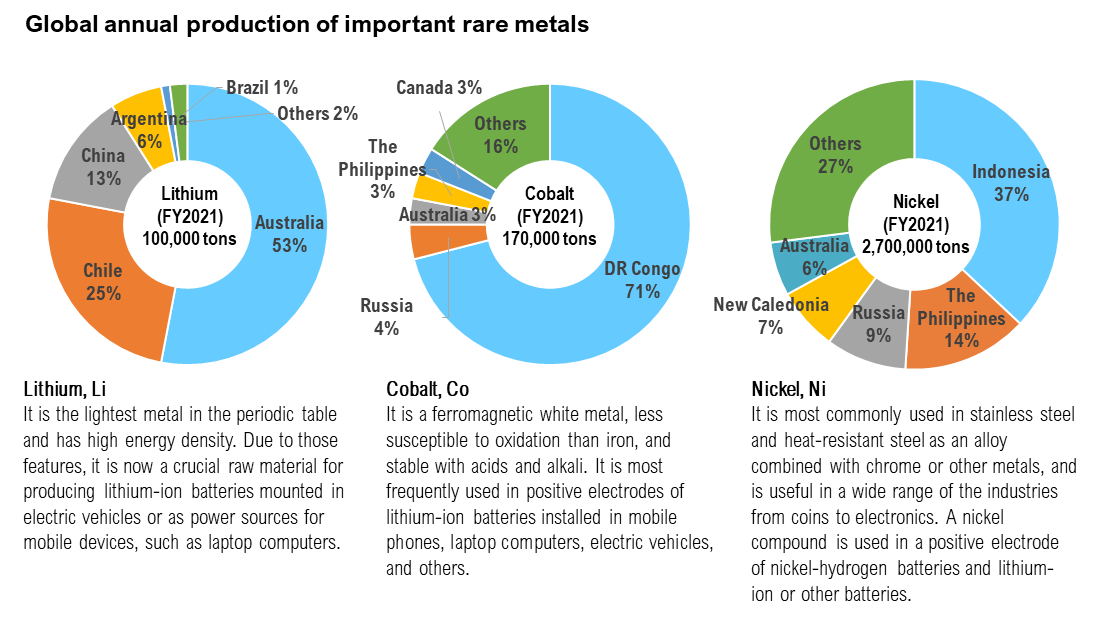
(Source) USGS “Mineral Commodity Summaries 2021”
Changes in electric power rates
Electric power rates greatly influence economic activities. Rates rose after the Great East Japan Earthquake. They declined from FY2014 to FY2016 thanks to falling crude oil prices, but they have been on an upward trend thereafter. They have increased by 14% for homes and 15% for industry compared with FY2010 levels.
Due to the scarcity of energy resources in Japan, electric power rates are largely influenced by imported fuel oil prices. In fact, the rates have been linked to the prices of fuels such as crude oil and LNG. Fuel oil prices were relatively stable for several years, but increased in 2020 and 2021, which impacted the current power rates.
The past decline in crude oil prices and the current situation
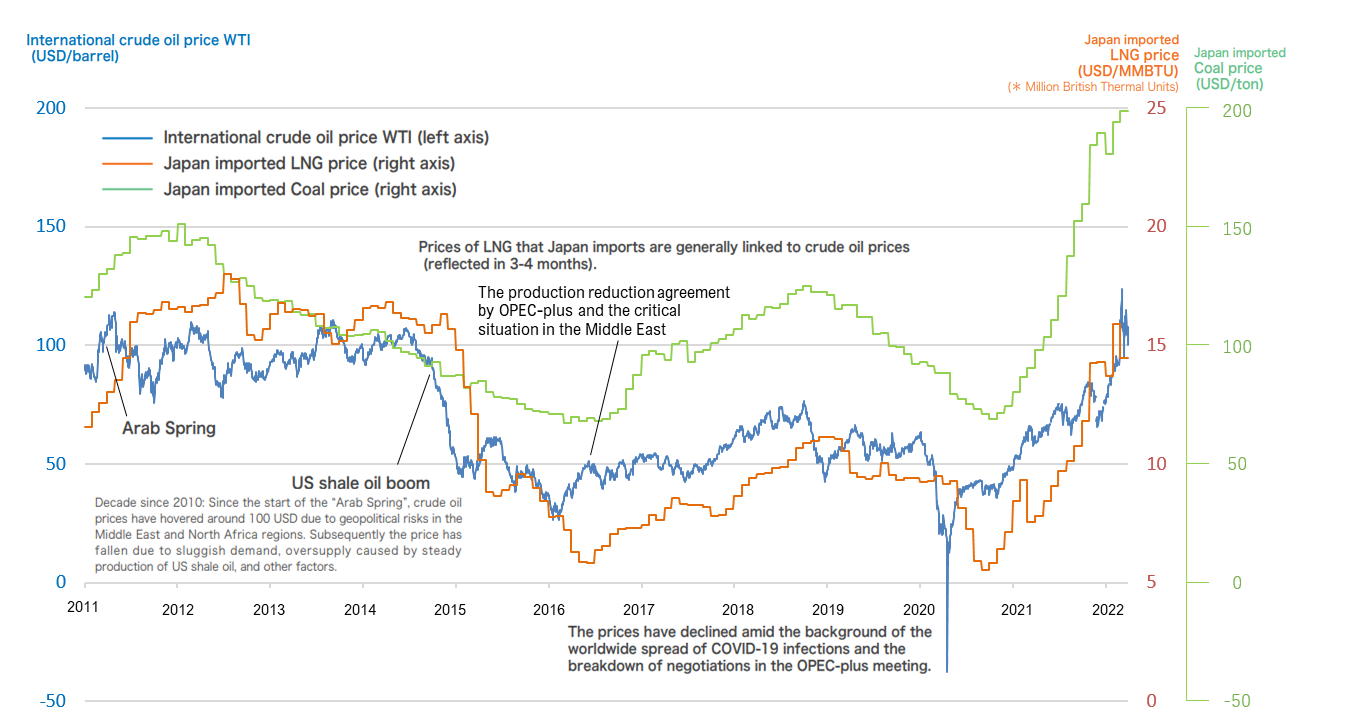
(Source) Created based on CME Nikkei and Trade Statistics published by the Ministry of Finance.
Another factor that influences electric power rates is the cost of renewable energy. Thanks to the introduction of the Feed-In Tariff (FIT) scheme in 2012, the installed capacity of renewable energy increased by 18% p.a. on average until FY2020. While the spread of renewable energy has been progressing, the purchase costs based on the FIT scheme have continue to rise to reach 3.8 trillion yen in FY2021, part of which is borne by consumers as a surcharge. The surcharge to an ordinary household was as high as 873 yen per month on the average model in FY2021. It is important to expand the cost-efficient introduction of renewable energy while lowering the burden on consumers.
Addressing environmental challenges
Addressing climate change is of critical importance, and Japan has declared that it aims to achieve carbon neutrality. Carbon neutrality refers to achieving net-zero greenhouse gas emissions. The amount of greenhouse gasses (GHGs) in Japan was 1.21 billion tons in FY2019, 85% of which was energy-related CO2 (emitted from fuel combustion activities such as power generation.) Therefore, curbing energy-related GHGs is a critical challenge in the future.
It is essential not only for Japan but for the whole world to make efforts toward achieving carbon neutrality. The number of countries and regions that have declared their intention to achieve carbon neutrality has been increasing. 144 countries and regions including Japan have declared their intention to achieve carbon neutrality by 2050, which account for 42.2% of the world’s total CO2 emissions (calculated from actual figures for 2018.) Other countries such as China have declared their intention to achieve carbon neutrality by 2060 and India by 2070. With these countries included, 88.2% of the world’s total CO2 emissions have been covered.
Countries/regions that have agreed with the principle of achieving carbon neutrality
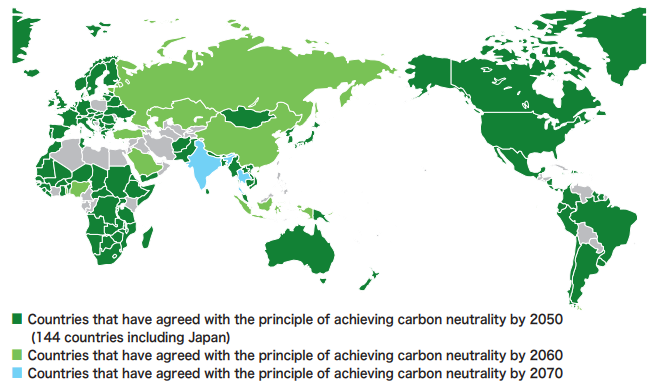
Although CO2 emissions have been reduced in advanced countries including Japan, they are increasing globally, particularly in developing countries. Therefore, it is important to advance the energy transition and decarbonization in emerging nations and developing countries, mainly in Asia.
Countries/regions that have agreed with the principle of achieving carbon neutrality
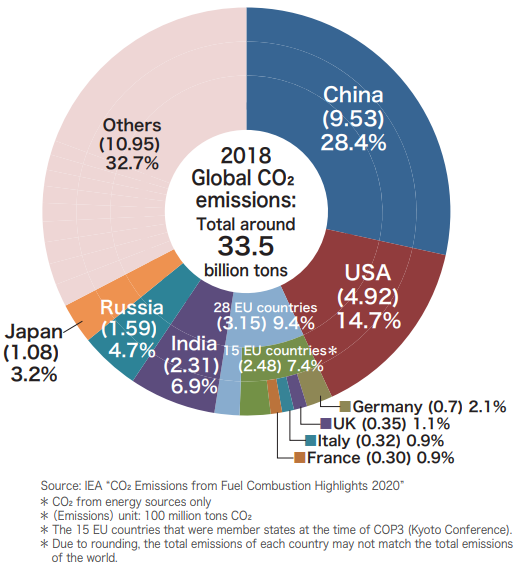
GHG emissions in Japan increased after the Great East Japan Earthquake. However, thanks to various efforts, current emissions are lower than the pre-earthquake levels. Japan must continue efforts toward further reducing emissions.
Changes in Japanʼs greenhouse gas emissions
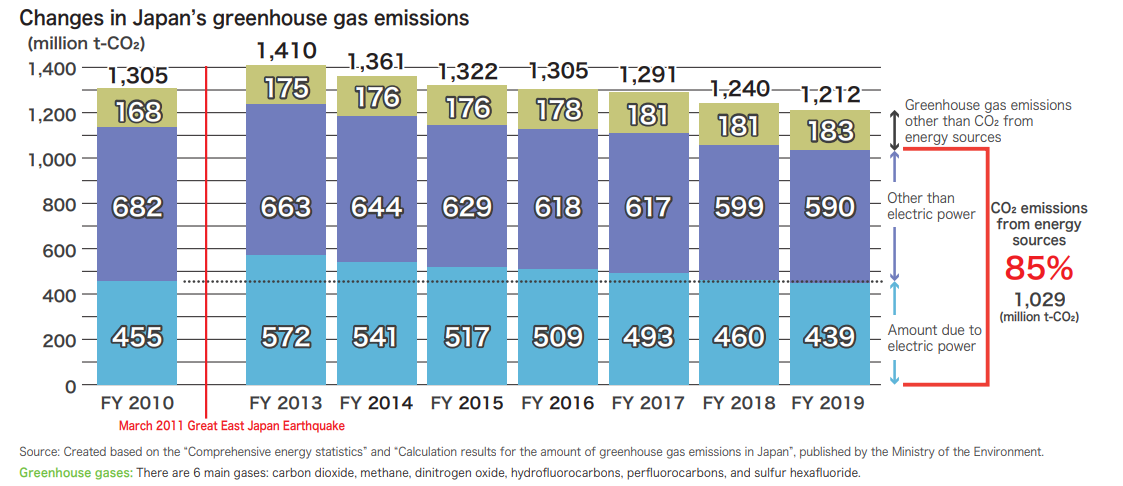
The Green Growth Strategy was formulated as a measure to realize a “positive cycle of economic growth and environmental protection” through efforts toward achieving carbon neutrality by 2050. In the past, global warming countermeasures were considered to be constraints on economic growth or its costs. On the contrary, the new strategy considers global warming countermeasures to be “opportunities for growth.” It promotes investment for innovation and boosts corporate efforts to this end. This industrial policy is being promoted through public-private collaboration, targeting a wide range of industrial sectors.
Ensuring safety
In recent years, Japan has experienced quite a few extreme natural disasters which occurred one after another, having an enormous impact on society. Typhoons and torrential rains damaged power generation facilities and knocked over pylons and utility poles. Earthquakes caused large-scale blackouts together with tsunami damage. As there may be more natural disasters in the future because of global warming, it is crucial to ensure safety in supplying energy. We must construct disaster-resilient infrastructure for a quick recovery from such damage.
In June 2020, a cabinet decision was made to enact the Act of Partial Revision of the Electricity Business Act and Other Acts for Establishing Resilient and Sustainable Electricity Supply Systems. This Act revised the Electricity Business Act and other acts which stipulate rules to be adhered to by electricity businesses. Based on this revision, the plan is to enhance collaboration between businesses to cope with disasters, construct more resilient power transmission/distribution networks and introduce disaster-resilient dispersed electricity systems.
One important effort to ensure safety is to make the power infrastructure more resilient. To enhance resilience to disasters, plans are underway to strengthen power networks across the nation for transition to next-generation networks that are also suitable for the introduction of large volumes of renewable energy. For example, the project to duplicate the cross-regional transmission lines between Hokkaido and Tohoku has been given the green light. On the other hand, the backup systems for power supply to metropolitan areas are still to be strengthened.
Regarding nuclear power, if the Nuclear Regulation Authority recognizes that a nuclear power plant conforms with the new regulatory standards, the restart of the power plant will be advanced with the judgment of the authority respected. It must proceed on the primary premise of safety, while obtaining understanding from the local stakeholders.
Basic energy policy
Japan’s energy policy is based on the principle referred to as “S + 3E”. On the underlying premise of Safety, efforts are being made to simultaneously achieve Energy Security, Economic Efficiency and Environmental Sustainability. Japan is a country with limited natural resources. There is no one source of energy that is superior in every way. Therefore, it is essential to create a multi-layered energy supply structure in which each energy source is exploited fully for its best performance and compensates for disadvantages of other resources.
Based on the “S + 3E” principle, an outlook for energy supply and demand in FY2030 has been formulated (Energy Mix). It is important to reduce CO2 emissions on the major premise of securing a stable and inexpensive supply of energy while advancing thorough energy efficiency enhancement and expanding the use of non-fossil energy sources.
Primary energy supply/Structure of power sources
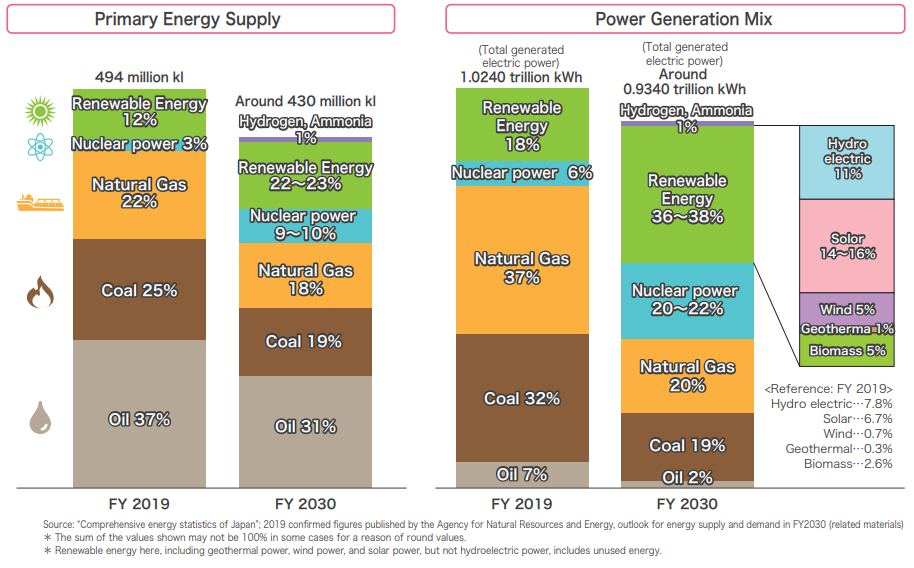
For more detailed information about the energy situation in Japan, please refer to Japan’s Energy 2021, with some of the figures updated in this article.
Division in charge
Research and Public Relations Office, Commissioner’s Secretariat, ANRE
![]() The original Japanese text of this article; Click here
The original Japanese text of this article; Click here
